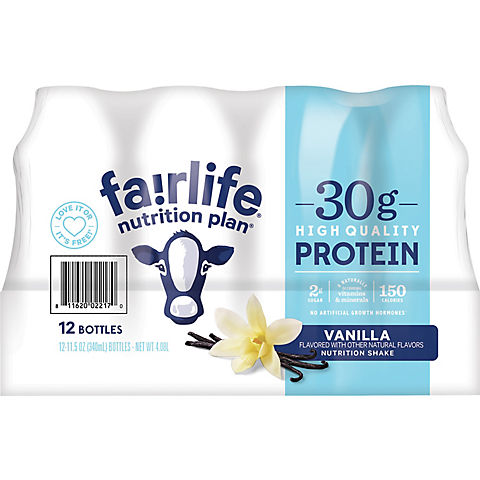Fairlife Nutrition Plan High Protein Shake Vanilla – BJs WholeSale Club
The Fairlife Nutrition Plan High Protein Vanilla Shake is a high protein and low sugar nutrition shake made to help you achieve your health goals. This protein shake is made with 30 grams of high quality protein, eight naturally occurring vitamins and minerals, and just two grams of sugar. With trying the Fairlife Nutrition Plan, you can support your journey with the goodness of Fairlife ultra-filtered milk.
The Fairlife Nutrition Plan High Protein Vanilla Shake is a high protein and low sugar nutrition shake made to help you achieve your health goals. This protein shake is made with 30 grams of high quality protein, eight naturally occurring vitamins and minerals, and just two grams of sugar. With trying the Fairlife Nutrition Plan, you can support your journey with the goodness of Fairlife ultra-filtered milk.
- Supports your health goals
- 30g high quality protein
- 2g sugar
- 150 calories
- Includes 12 Fairlife Nutrition Plan High Protein Vanilla Shake drinks






Reviews
There are no reviews yet.